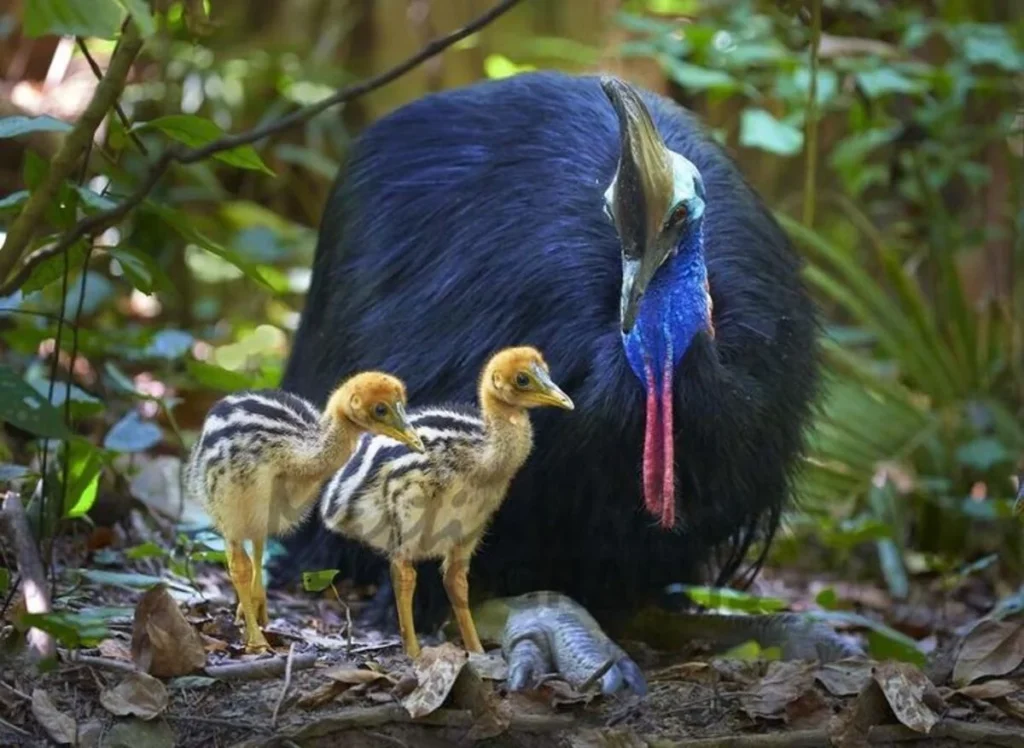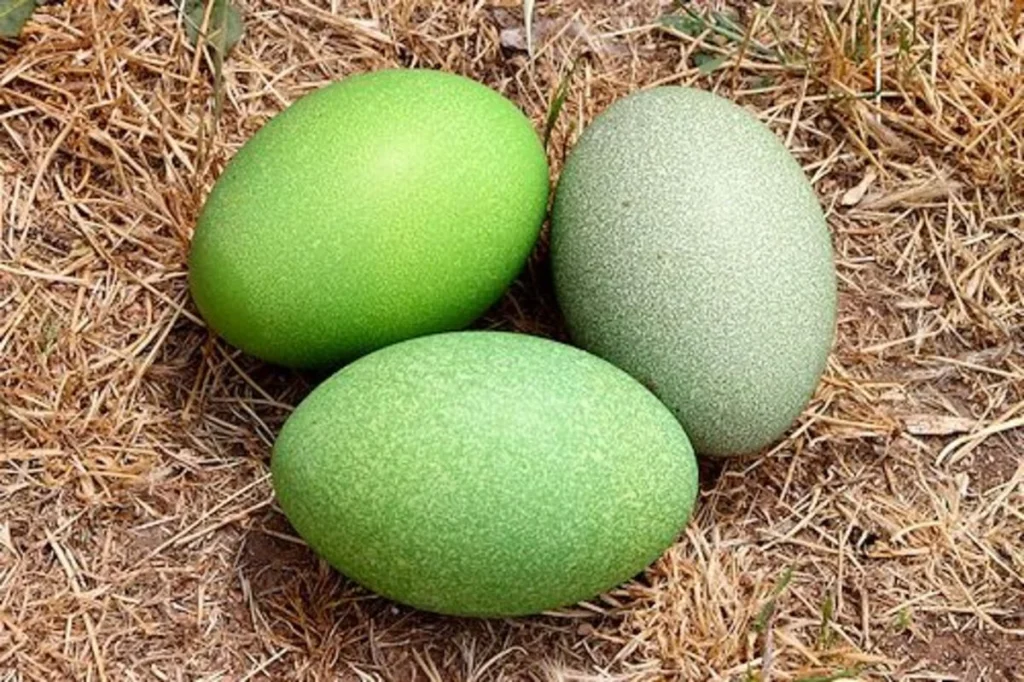The cassowary egg is a remarkable part of one of the world’s most mysterious and powerful birds. Known for its large size and striking green color, the cassowary egg plays a vital role in the survival of this rainforest giant.
These eggs are not just fascinating because of their appearance, but also because of the unique way cassowaries care for them.
Understanding the cassowary egg helps us appreciate the delicate balance of nature and the importance of protecting these incredible birds and their habitats.
Physical Characteristics of the Cassowary Egg

Cassowary eggs are among the most significant and most visually striking in the bird kingdom. Each egg measures around 135 mm in length and 95 mm in width, with an average weight ranging from 580 to 650 grams.
This significant size allows for proper insulation and moisture retention during the incubation period, which is essential for the healthy development of the chick inside. Only the eggs of ostriches and emus are larger, placing the cassowary egg third in size among all living bird species.
What truly sets the cassowary egg apart is its unique green shell. The color comes from biliverdin, a natural pigment also found in other birds but rarely in such rich amounts. This deep green hue acts as a form of camouflage, allowing the egg to blend with the rainforest floor, where it is hidden among leaves and vegetation.
The shell also has a slightly rough and textured surface, which helps it avoid detection by predators and contributes to its overall survival strategy.
Nesting and Incubation Behavior
In a fascinating reversal of typical avian parental roles, male cassowaries assume the primary responsibility for nesting and incubation. After the female lays a clutch of three to five eggs in a shallow ground nest lined with plant material, she departs, leaving the male to incubate the eggs for about 50 days.
During this period, the male seldom eats or drinks, dedicating himself entirely to protecting and warming the eggs.
Reproductive Strategy and Chick Rearing
Cassowaries follow a unique reproductive system where females are polyandrous, meaning they mate with several males during the breeding season. Once a female lays her eggs, she leaves the nest, and the male takes full responsibility for incubation and chick-rearing.
This role reversal is rare in the bird world, showcasing the male’s dedication to raising the offspring. He guards the nest, incubates the eggs for around 50 days, and continues to care for the chicks for up to nine months, teaching them survival skills like foraging and navigating the forest.
Key Points of Breeding and Rearing
- Breeding season runs from June to October.
During this time, cassowaries are most active in finding mates and building nests in well-hidden forest areas. - Females lay multiple clutches with different males.
Each male independently raises the young, which increases the species’ overall chances of successful reproduction. - Males provide all the parental care.
From incubation to teaching chicks how to survive, the male is the sole caretaker throughout early development.
Ecological Significance of Cassowary Eggs
Beyond their reproductive function, cassowary eggs play a pivotal role in rainforest ecology. The successful hatching and rearing of chicks contribute to the maintenance of cassowary populations, which are vital seed dispersers in their habitats.
By consuming a variety of fruits and excreting the seeds across vast areas, cassowaries facilitate forest regeneration and plant diversity.
Human Interaction and Cultural Importance
Historically, indigenous communities in New Guinea have recognized the value of cassowary eggs. Archaeological evidence suggests that humans collected near-mature cassowary eggs as early as 18,000 years ago, possibly raising the chicks to adulthood for food and ceremonial purposes.
This early form of animal husbandry highlights the longstanding relationship between humans and cassowaries.
Conservation Concerns
Cassowaries are currently listed as vulnerable due to a mix of environmental and human-related threats. Their dependence on tropical rainforests makes them especially sensitive to deforestation and habitat fragmentation. Vehicle collisions, attacks by domestic dogs, and predation on eggs by invasive species further threaten their survival.
Conservationists are actively working to protect remaining habitats, restore wildlife corridors, and educate local communities about the importance of cassowaries in maintaining rainforest biodiversity.
Major Threats to Cassowary Survival
- Habitat loss from deforestation and development.
As forests are cleared for farming and housing, cassowaries lose access to food, nesting areas, and safe migration paths. - Increased vehicle strikes in populated areas.
Cassowaries often wander onto roads while searching for food or mates, making them vulnerable to fatal collisions. - Predation by dogs and invasive species.
Domestic dogs, wild pigs, and feral animals often destroy nests, kill chicks, and pose a serious risk to adult cassowaries. - Limited public awareness of their role in ecosystems.
Many people are unaware that cassowaries play a crucial role in dispersing seeds and maintaining forest health, making their protection even more vital.
Conclusion:
The cassowary egg is a fascinating symbol of nature’s complexity and beauty. Its large size and vibrant green color are uniquely adapted to protect the next generation of this vital rainforest bird.
Male cassowaries take on the responsibility of incubation and chick-rearing, showing a rare role reversal in the bird world. Protecting cassowary eggs and their habitats is essential for preserving the delicate balance of tropical ecosystems.
By understanding the life cycle of cassowaries and their eggs, we can better support conservation efforts and help ensure these incredible birds continue to thrive.
Frequently Asked Questions:
1. How big is a cassowary egg?
Cassowary eggs are about 135 mm long and weigh around 650 grams, making them one of the largest bird eggs.
2. Why are cassowary eggs green?
The green color comes from a pigment called biliverdin, which helps camouflage the eggs in the dense forest floor.
3. Who incubates cassowary eggs?
Interestingly, male cassowaries incubate the eggs and care for the chicks after they hatch.
4. How long does it take for a cassowary egg to hatch?
Incubation lasts about 50 days, during which the male guards the nest carefully.
5. Are cassowary eggs endangered or protected?
Yes, cassowaries are protected due to habitat loss and threats from humans and introduced predators, so their eggs and nests are also protected by conservation laws.

